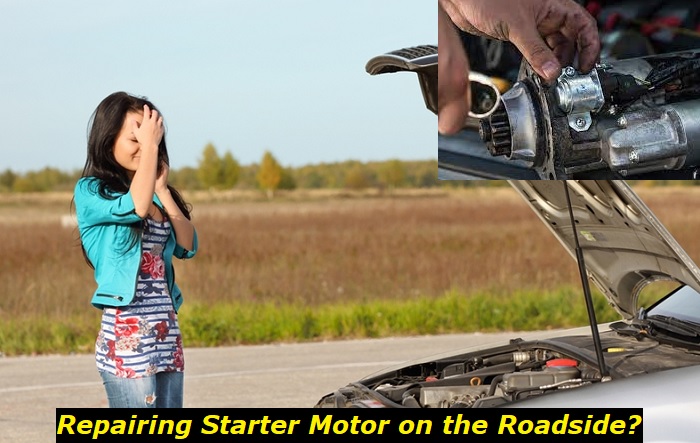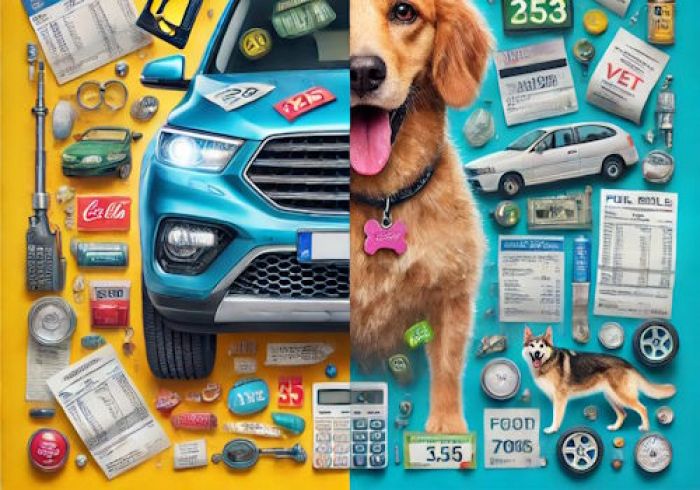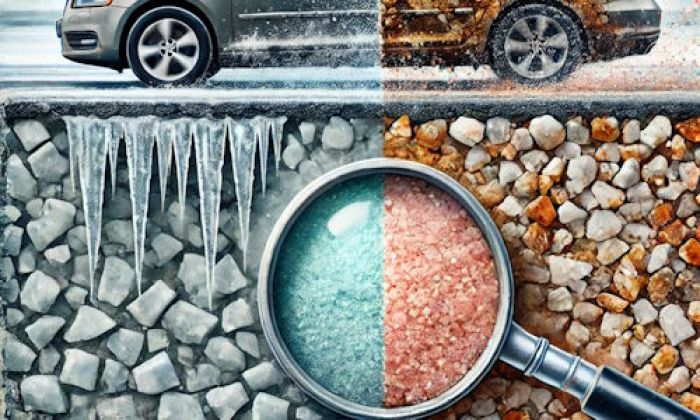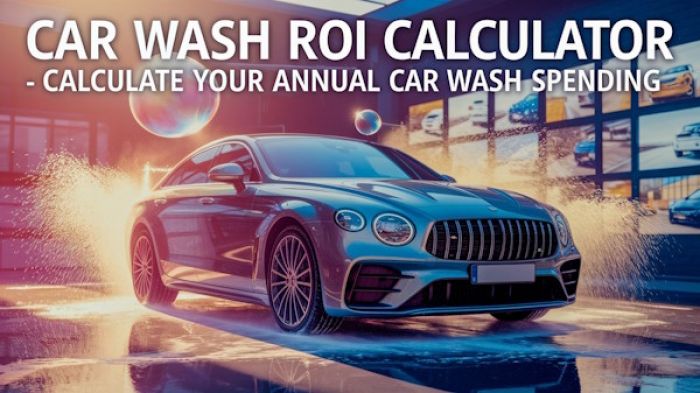Like every other car part, the starter can fail. For a seasoned driver, this might not be a new thing and they won't panic when it happens. If you have never encountered a failed starter motor, this article will give you the various tricks you can perform to try and bring the thing back to life. If all goes well, you will be on your way to your presentation in a jiffy.
No-start problems highlights
- DIY repairs:possible but complicated
- Tools needed:basictools set
- Commonreasons:battery issues, wiring problems, bad connections, electronic unit failure
- Time to repair:0.5 - 3 hours
- Price for parts:$100 - $450
- Can you drive?Obviously, no
- Alternative solutions:jump-starting, starter shorting, tow-truck

How does a starter work?
The starter is made of several components some of which are electrical others mechanical. When you insert and turn the key or push the start button to turn on the engine, a couple of procedures take place behind the scenes. Let us take a look at some of the key ignition components and the role they play in starting the engine.
1) The battery
The battery is the powerhouse of the car. without a battery, your vehicle won't start. The battery has to have a minimum level of volts to be able to power not only the starter but the other electrical parts and systems in the car.
2) The starter relay
The starter relay is found in the fuse box and is responsible for completing the circuit. The starter relay communicates with the immobilizer which confirms that the key used is the right one, or that the vehicle is in gear. Other things the ECU confirms include whether the brake pedal is pressed. Once everything has been confirmed to be okay, the ECU completes the circuit in the relay which carries the current onto the starter control unit.
3) The solenoid
This part is responsible for the amplification of the battery current. When the charge has reached the required level, the plunger in the solenoid slides out to make contact with the starter. At the same time the plunger is moving to make contact with the starter motor, a lever pushes the pinion gear to engage with the flywheel or flexplate. The motor starts turning at high speed once the solenoid makes contact. The pinion gear turns the flywheel which then turns the engine on.
4) The starter motor
The starter motor is made up of several parts which include:
- The armature
- Commutator
- Brushes
- Armature shaft
- Field windings
- Rear windings
All of these parts have to work smoothly for the entire ignition process to happen. A malfunction on the part of the brushes or the armature can force you to abandon your journey. It is the brushes that make contact with the powered solenoid. The current flows through one brush through the commutator and then to the coil winding of the armature and back to another brush. The inside of the armature housing has magnets and when a powerful current flows through the armature, the electromagnetic field is created.
What to do when the starter motor fails
If your car starter fails, you don't need to call for a tow truck immediately. There are several tricks you can do first and hopefully, you can get yourself out of a jam. It is imperative that you note that getting your starter turning the engine by the roadside might be temporary. You should always seek professional help afterward to ensure that the problem is resolved completely.
1) Listen closely
When you start your vehicle the cluster lights will illuminate momentarily and then the engine will continue running. If the car doesn't start, you should listen closely to try and establish where the problem lies. If the starter is bad or if the battery is dead, you won't hear anything when you turn the ignition key or press the start button. A bad starter will not make a sound and the dashboard lights will be bright. In other instances where the starter motor or its solenoid are very weak, a light clicking sound can be heard.
A dead battery or one with a low charge will give a clicking sound when you turn the key to the 'start' position. The cluster lights will be dim and the headlights will be off or very dim. With every subsequent trial of starting the engine, the clicking will get worse and eventually there will be nothing. It is therefore important to stop trying to force the battery once you realize it is dead.
If the starter is making a rapid chirping sound when you turn the ignition key but the battery won't start, it is likely the issue is not the starter. In this case, the problem might be lying with the fuel delivery system the spark plugs, or the air intake system.
You might hear a buzzing sound when you try to start your car. this might be the starter pinion gear not engaging with the flywheel. As pointed out earlier, the pinion gear will need to mesh with the flywheel or flexplate for the crankshaft to start rotating.
Having established the sound or lack of it when you turn the ignition key will help you determine whether you have a starter problem or not.
2) Tap the starter
After establishing that the battery is working fine, you will need to fetch a pipe or a lock sturdy stick and hammer. Open the hood and locate the starter and with the stick, tap it firmly three or four times. The tapping is meant to jolt the insides of the starter and it should not be so hard as to dent the casing.
Most modern cars don't come with easily accessible starters. But generally, the starter is found between the engine and the transmission. If you are not able to access it from the hood, then you can try it from the front wheel arch. You should then try and start the car again.
If the car doesn't start, it is time to try tapping the starter from a different angle. Lie under the car and hit the starter several times. Hit is on the opposite side of the pinion gear. This is where the starter brushes are located. Remember to hit it just hard enough so as to not leave any mark on the starter casing.
The reason for tapping the starter is to jolt the brushes which can be stuck and whenever you turn the ignition on, they don't make contact with the commutator. Hitting the starter will release the brushes and ensure the circuit will be completed once you turn the ignition key.
The engine should start now after giving the starter a good shake. The starter brushes wear out or get loose over time and they will eventually fail to reach the commutator. If the tapping makes the starter come to life, then you should start planning on buying a new starter or replacing the brushes. For the several times the starter misbehaves, you can nudge it this way before it completely fails.
3) Bypass the starter
This is the last roadside trick you have up your sleeve. Locate the starter solenoid. Some vehicles have more than one solenoid. The battery wires connect to the solenoid and you will find the starter wire going into the engine bay onto the ignition switch. The other terminal connects to the jumper wire.
Pick a screwdriver, put the car key in the ON position, and connect the two terminals of the solenoid. But before doing this, ensure the car is in parking and the parking brake is engaged. For a manual car, ensure the gear is in neutral. By connecting these two metal points, you are bypassing the solenoid and creating a direct connection between the motor and the ignition switch. If the solenoid is good the engine will immediately start.
If after connecting the metal points with a screwdriver all you hear is a humming sound from the starter motor, then the solenoid is bad.
Conclusion
A bad starter can easily make your day start off badly. However, with a little knowledge of how a vehicle starter works, you should never get stranded in the woods. It is important to note that in all the roadside tricks you can perform, the starter might be irreversibly damaged and you may need to call for a tow truck after all.
In certain instances, the starter brushes might be totally worn out or the armature winding has shorted. It is therefore important to know that even though you might manage to make the vehicle start, you should visit a professional mechanic as soon as possible to fully diagnose and help you solve this starter problem.
About the authors
The CarAraC research team is composed of seasoned auto mechanics and automotive industry professionals, including individuals with advanced degrees and certifications in their field. Our team members boast prestigious credentials, reflecting their extensive knowledge and skills. These qualifications include: IMI: Institute of the Motor Industry, ASE-Certified Master Automobile Technicians; Coventry University, Graduate of MA in Automotive Journalism; Politecnico di Torino, Italy, MS Automotive Engineering; Ss. Cyril and Methodius University in Skopje, Mechanical University in Skopje; TOC Automotive College; DHA Suffa University, Department of Mechanical Engineering






Add comment